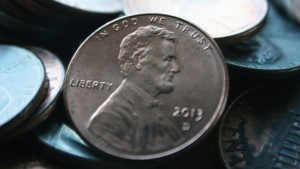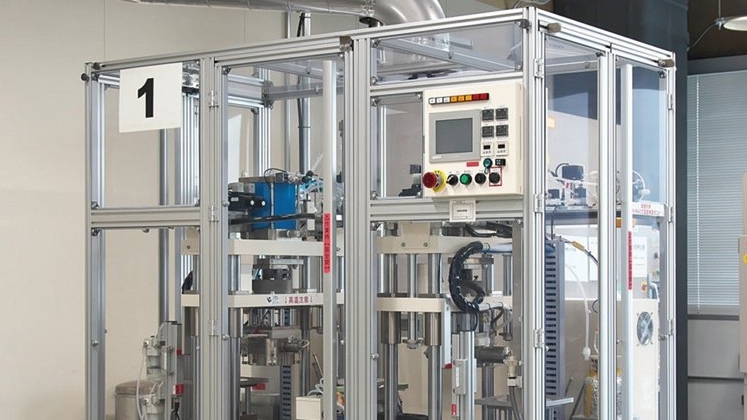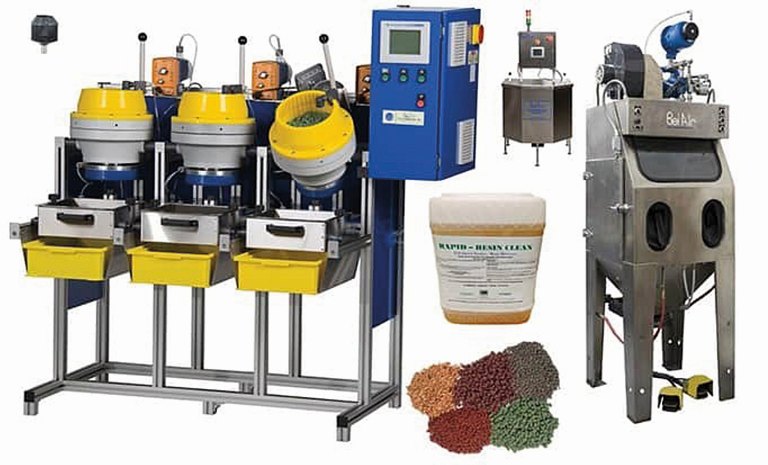Environmentally friendly electroplating technology from Toyota
In cooperation with the vacuum press machine manufacturer Mikado Technos and Kanematsu Corporation, Toyota has introduced a new process for plating automotive and electronic components that reduces the environmental impact.
Instead of an electroplating bath, a solid polymer electrolyte membrane (solid electrolyte membrane) is used as the source of the metal ions, which acts like a stamp. The component can be selectively coated with copper, nickel or other metals. The immersion process is eliminated here, which is why water consumption is drastically reduced. According to the company, the amount of waste water is reduced by a third.CO2 emissions are reduced by 67% and the cycle time is shorter.
In contrast to the conventional electroplating process, the electrolyte is stored in the upper part of the system. The metal ions in the liquid pass through the solid electrolyte membrane, which sits at the top of the head and is pressed against the surface to be coated. The membrane only comes into contact with the surface to be coated. The coating technology can be roughly compared to tampon electroplating. The systems are now being built in series.
www.toyota.co.uk; Prod. Eng. Solutions, July 07, 2020
Post-processing of 3D-printed components
In the future, surface technology will play a more important role in 3D-printed components. In the medical technology, aerospace, automotive and small arms industries, 3D printed components are already used in considerable quantities. 3D printing enables the production of highly complex parts, which poses a major challenge for subsequent coating. Subsequent surface treatments include electroplating, powder coating, coloring and build removal. Close collaboration with the design team is essential here.
The many factors to consider have been summarized in a short essay. One of the specialists in this field is Bel Air Finishing in Richmond, USA.
https://www.belairfinishing.com/3d-post-processing/; https://www.todaysmedicaldevelopments.com/article/post-processing-bel-air-3d-printing/
The American penny
 Until archaeologists have unearthed something new, we assume that the first coins in human history date back to Lydia around 2600 years ago. The misshapen, so-called stater (stater = "he who weighs"), were formed from lumps of gold and silver metal and had a standardized weight. Coins reflected the culture, history, power and prosperity of the state. Despite monetary transactions using credit or debit cards, electronic transfers, bitcoins and more, the issuers of the currency still cling to the round, metal version today. Although the smallest coin currency is rapidly disappearing in emerging markets, the smallest coin units can still be found in industrialized countries, although it is uncertain how long it will stay that way. In Europe, for example, there have been discussions for several years about doing away with the 1, 2 and 5-cent pieces.
Until archaeologists have unearthed something new, we assume that the first coins in human history date back to Lydia around 2600 years ago. The misshapen, so-called stater (stater = "he who weighs"), were formed from lumps of gold and silver metal and had a standardized weight. Coins reflected the culture, history, power and prosperity of the state. Despite monetary transactions using credit or debit cards, electronic transfers, bitcoins and more, the issuers of the currency still cling to the round, metal version today. Although the smallest coin currency is rapidly disappearing in emerging markets, the smallest coin units can still be found in industrialized countries, although it is uncertain how long it will stay that way. In Europe, for example, there have been discussions for several years about doing away with the 1, 2 and 5-cent pieces.
US citizens are proud of their legacy coins, especially because they have remained the same in appearance for more than 100 years and today's coins hardly differ from the oldest issues. In reality, inflation and historical events have forced the mints to think innovatively and pragmatically.
The American penny had a positive value until about seventy years ago, with a composition of 95% copper. The inflation of the sixties and seventies of the last century reversed the situation. In molten form, the penny was then worth more than 1 cent. New pennies were minted in 1982, based on a core alloy of 99.2% zinc and 0.8% copper. Copper plating changes the composition to 97.5 % zinc and 2.5 % copper. This is why today's pennies look exactly like the legacy pennies of yesteryear. Over the decades, manufacturing costs have increased. Today it costs more to produce the penny than it is actually worth. The situation is similar with the nickel-containing 5-cent coin. Unfortunately, neither electroplating nor pressing together with other metals helps today.
Nowadays, it is argued that the smallest coin units should be dispensed with completely, both for cost reasons and for practical reasons. When standing at the checkout, it takes longer to find all the small coins. In many countries around the world, including India, the small coins either have no value (they are minted from aluminum or iron-nickel) or have disappeared completely. In India, for example, 100 paise make one rupee, but the paise now only exists symbolically.
https://www.heartland.org/news-opinion/news/the-coin-shortage-a-big-deal-about-small-change
Address of the author
Dr. Nagaraj N. Rao, RRR House, RRR Labs Pvt. Ltd, Plot 80, Sector 23, Navi Mumbai - 400 705 India; Fax + 91 22 2783 4814, e-mail:



